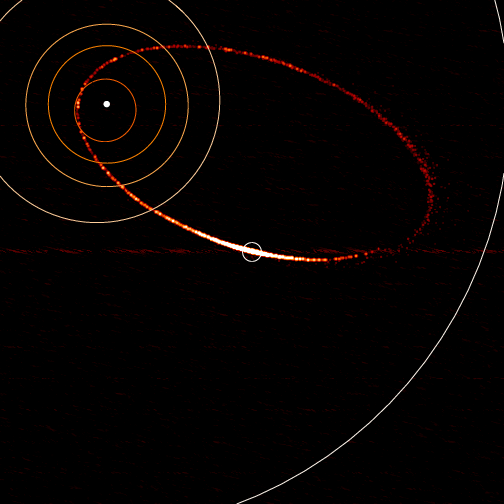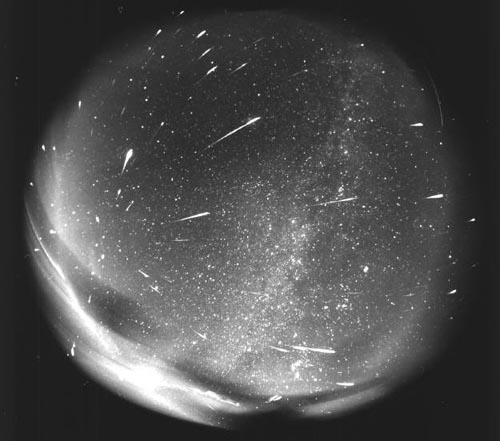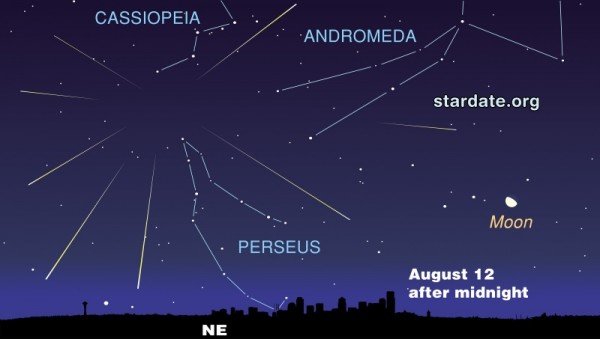There's a good reason for it, I promise! Allow me to explain. You see, every so often, a comet zooms in from the Kuiper Belt. As it approaches the Sun, it heats up, displaying a spectacular tail.

What is this "tail" actually? It's tiny, tiny fragments of ice and rock that make up the comet. You see, comets are like miniature, frozen planets. The gravity holding a comet together is amazingly weak because they're so tiny. For comparison, a grain of sand on the surface of a comet experiences less than 0.002% of gravity on Earth. This gravity is so small that tiny, micron-sized pieces of dust, in combination with the ice-melting light from the Sun, can knock tiny fragments of this comet off of it, leaving a spectacular dust trail throughout the inner Solar System.

Now, here's the fun part. The Earth takes one year to orbit the Sun. So, if a comet happened to leave a trail through the space where Earth passes, then every year, when the Earth passes through that part of space, we will collide with that comet dust.
And when that happens, we get a meteor shower!

This year, the Perseid meteor shower -- thanks to Comet Swift-Tuttle which last appeared in 1992 -- takes place on August 12th. They're called the Perseids because they appear in the constellation Perseus. However, that's not where you should look. Most people have a hard time finding all but the simplest constellations. The Big Dipper, the North Star, and that's it for most people.
Lucky for you, one of the next easiest to find is Cassiopeia, the big "W" in the Sky:

Well, right next to Cassiopeia, early in the morning of August 12th (before sunrise), you can see the Perseid meteor shower. Because the Moon will be out, estimates are that you will only be able to see about 100 meteors per hour, which is still pretty damned impressive. Where should you look? Right here:

And if you fail to get up Wednesday morning, look up again after sunset. The meteors will be less frequent, but the Moon will not have risen yet, so you may get a second chance! The best part about meteor showers? No equipment is necessary. No telescopes, no binoculars, nothing. All you need is to get away from city lights.
So get up early! Go! Look! And enjoy the beautiful sights of comet dust burning up in our upper atmosphere. And if you won't get up and see for yourself, check out the 2009 Perseid photo gallery!

The Moon is going to drown out most of the shower sadly.
Unfortunately, the part about getting away from city lights is easier said than done for a lot of people. As I learned from my aurora watching attempts of a few years ago, you want to be at least ten miles from the nearest Wal-Mart. Which puts the nearest suitable watching spots at least a half hour drive from where I live (and I'm in New Hampshire--your readers in more urban/suburban locales will have it even worse). Having to worry about whether the view to the north is clear is also a problem hereabouts, though at least the Perseids aren't as close to the horizon as the aurora borealis (when visible at this latitude) typically is.
That's the problem with astronomy, it never says "Sit on your back porch after lunch".
Oh well, I guess I won't see them. Living as I do in the city it's damn near impossible to resolve much other than really bright stars.
Exactly how early?
Hmmmm . . . I live 8-or-so miles out of town; it's going to be clear here; and I'm a Morning Person(tm) -- I might have to be there. And NE is the direction the front window faces . . . I might even get my Night Owl(tm) wife to get up for this!! Thanx for the tip.
But it's going to be all cloudy here in Portland :(
Would I be able to see it in Perth, Australia? According to my "Starry Night" application Perseus should be just above the horizon to the north at 5am tomorrow.